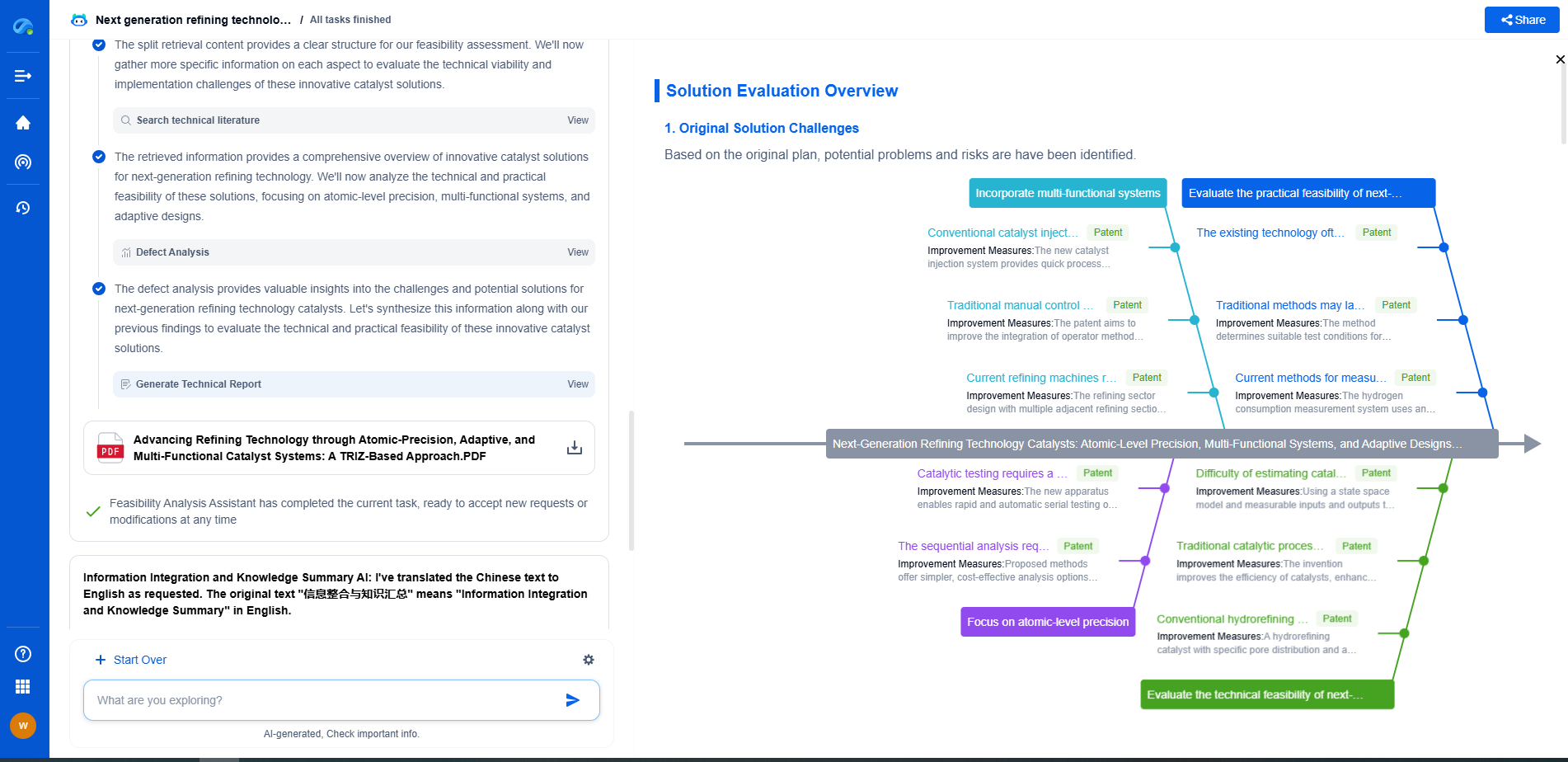ROS vs MATLAB for robot programming: Which is better?
JUN 26, 2025 |
Robotics is a rapidly evolving field with a plethora of tools and frameworks available for programming and controlling robots. Among the most popular tools are the Robot Operating System (ROS) and MATLAB. Both have their strengths and weaknesses, and choosing the right one depends on the specific needs of a project. This article will compare ROS and MATLAB in terms of features, usability, flexibility, community support, and application areas to help you make an informed decision.
What is ROS?
The Robot Operating System (ROS) is an open-source middleware suite that facilitates communication between various components of a robotic system. It provides a set of tools and libraries for building complex and robust robotic applications. ROS is designed to work across different robotic platforms and can integrate with various hardware and software components, making it highly versatile.
What is MATLAB?
MATLAB, short for Matrix Laboratory, is a high-performance language and interactive environment for numerical computation, visualization, and programming. It is widely used in engineering and scientific disciplines, including robotics, for algorithm development, data analysis, and simulation. MATLAB's Robotics System Toolbox extends its capabilities to include tools for designing, testing, and deploying robotic algorithms.
Features and Capabilities
When it comes to features, both ROS and MATLAB offer a rich set of functionalities. ROS excels in distributed systems, allowing for seamless integration and communication between different components of a robotic system. It supports a wide range of sensors and actuators, and its modularity makes it easy to swap components.
MATLAB, on the other hand, provides a comprehensive environment for algorithm development and testing. Its powerful toolboxes support advanced mathematical operations, signal processing, and control system design, making it ideal for developing complex algorithms. MATLAB's Simulink extension facilitates model-based design, which is a significant advantage in simulating robotic systems before deployment.
Usability and Learning Curve
ROS requires a strong understanding of programming, particularly in C++ or Python, to develop and maintain applications. The learning curve can be steep for beginners, but the wealth of tutorials and documentation available online can help alleviate this challenge. Once mastered, ROS provides a highly customizable and efficient environment for robotic programming.
MATLAB is generally considered more user-friendly, with an intuitive interface and extensive documentation. Its scripting language is straightforward for beginners, and the interactive environment provides immediate feedback, which is beneficial for learning and debugging. MATLAB's visual tools enable users to quickly build and test algorithms without extensive coding.
Flexibility and Extensibility
ROS's open-source nature makes it highly flexible and extensible. Users can modify existing packages or develop new ones to meet specific requirements. The ROS ecosystem is vast, with numerous packages available for various robotic applications. This flexibility makes ROS suitable for research and development projects that require frequent changes and updates.
MATLAB, while not open-source, offers considerable flexibility through its extensive library of toolboxes and functions. Users can create custom functions and integrate external libraries to extend its capabilities. However, MATLAB may not be as adaptable as ROS when it comes to integrating with diverse hardware systems.
Community Support and Resources
Community support is crucial for any software's success, and both ROS and MATLAB have active user communities. ROS has a large and growing community of developers, researchers, and enthusiasts who contribute to its development and provide support through forums, mailing lists, and meetups. The collaborative nature of ROS's community fosters innovation and rapid development of new features and packages.
MATLAB also boasts a strong community, with a wealth of resources available, including user forums, webinars, and extensive documentation. MathWorks, the company behind MATLAB, provides professional support and regularly updates the software with new features and improvements. This level of support ensures that users can find help and resources when needed.
Application Areas
ROS is widely used in academia and research for developing cutting-edge robotic applications. Its flexibility and ability to work across multiple platforms make it ideal for prototyping and experimentation. ROS is also used in industrial applications where custom and scalable robotic solutions are required.
MATLAB is prevalent in academia and industry for developing and deploying algorithms in engineering and scientific fields. Its strength lies in data analysis, simulation, and control system design, making it suitable for projects where these are primary requirements. MATLAB is often used in educational settings for teaching robotics concepts due to its user-friendly nature.
Conclusion
In conclusion, both ROS and MATLAB have their unique strengths and are suited to different aspects of robot programming. ROS is a powerful tool for developing complex, distributed robotic systems and is well-suited for research and industrial applications. MATLAB, with its robust algorithm development and simulation capabilities, is ideal for projects focused on data analysis, visualization, and control systems.
Ultimately, the choice between ROS and MATLAB depends on your specific project needs, your familiarity with the tools, and the available resources. Understanding the strengths and limitations of each can help you select the right tool for your robotic programming needs.
Ready to Redefine Your Robotics R&D Workflow?
Whether you're designing next-generation robotic arms, optimizing manipulator kinematics, or mining patent data for innovation insights, Patsnap Eureka, our cutting-edge AI assistant, is built for R&D and IP professionals in high-tech industries, is built to accelerate every step of your journey.
No more getting buried in thousands of documents or wasting time on repetitive technical analysis. Our AI Agent helps R&D and IP teams in high-tech enterprises save hundreds of hours, reduce risk of oversight, and move from concept to prototype faster than ever before.
👉 Experience how AI can revolutionize your robotics innovation cycle. Explore Patsnap Eureka today and see the difference.
- R&D
- Intellectual Property
- Life Sciences
- Materials
- Tech Scout
- Unparalleled Data Quality
- Higher Quality Content
- 60% Fewer Hallucinations
Browse by: Latest US Patents, China's latest patents, Technical Efficacy Thesaurus, Application Domain, Technology Topic, Popular Technical Reports.
© 2025 PatSnap. All rights reserved.Legal|Privacy policy|Modern Slavery Act Transparency Statement|Sitemap|About US| Contact US: help@patsnap.com

